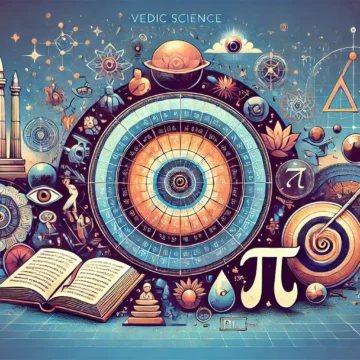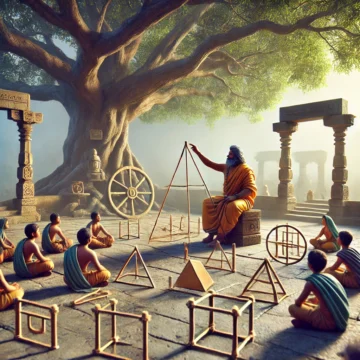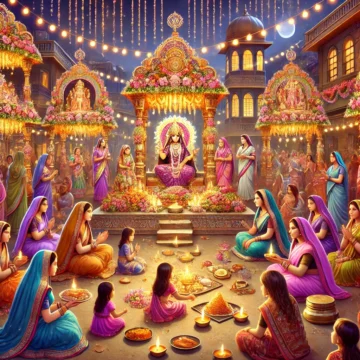Explore the fascinating interplay between ancient Vedic science and modern geometry in our latest blog post, where we delve into the mathematical elegance of circles, demonstrating calculations for circumference and area with practical examples that highlight their relevance in today's architectural and engineering feats.
Festivals for Hindu Female Deities: A Journey Through Tradition
Dive into our exploration of Hindu festivals celebrating female deities, where we uncover the rich tapestry of traditions that honor the divine feminine. From Lakshmi Puja during Diwali to Varalakshmi Vratam, these festivals are not only spiritual events but also vital cultural expressions that reinforce societal bonds and invoke prosperity.
Radha Raman Temple: A Spiritual Jewel in Vrindavan
Discover the spiritual essence of the Radha Raman Temple in Vrindavan, a beacon of devotion and architectural beauty. This sacred site, founded by Gopala Bhatta Goswami, not only embodies the rich traditions of Gaudiya Vaishnavism but also serves as a cultural landmark, drawing devotees worldwide to partake in its divine ambiance.
Yoga Sutras’ Memory Vritti: Unraveling the Threads of Recall
In 'Yoga Sutras' Memory Vritti,' we delve into how memory, a crucial mental modification, shapes our experiences and spiritual practices. Understanding the dynamics of memory, as outlined in Sutra 1.11, allows for greater control over our mental processes, enhancing both spiritual development and cognitive abilities.
India-Pakistan Relations Under I.K. Gujral: Impact of His Policies on Dharma and National Security
This post evaluates the controversial Gujral Doctrine's impact on India-Pakistan relations, assessing how I.K. Gujral’s policies as India's Prime Minister influenced regional stability and aligned with Dharma. We explore the balance between ethical governance and national security during his tenure, scrutinizing his diplomatic strategies in the geopolitical complexities of South Asia.
Manusmriti Ritual Purity Insights: Bridging Ancient Wisdom with Modern Living
This exploration into the Manusmriti Ritual Purity Insights delves deep into the essence of ritual purity and ethical living as prescribed in Hindu scriptures. It highlights how these ancient guidelines are not only about maintaining personal cleanliness but also fostering communal harmony and moral behavior in our daily lives.
Dattatreya’s Wisdom from Pingla: Misplaced Values and Suffering
Dattatreya's Wisdom from Pingla" explores the profound teachings of Bhagwan Dattatreya, focusing on misplaced values, the illusion of desires, and the transient nature of physical attachments. Through insightful reflections on Slokas 32 and 33, the blog highlights timeless lessons on self-perception, spiritual growth, and fostering authentic relationships rooted in deeper values.
Vedic Science and Shapes- Understanding Their Properties
This post explores the properties of basic shapes through Vedic science, focusing on calculating area and perimeter for rectangles and squares. With practical examples and real-world applications, you’ll learn how these foundational geometric principles impact everyday activities, from architecture to crafting. Gain a comprehensive understanding of area and perimeter, and enhance your mathematical toolkit.
Festivals and Celebrations of Female Deities: A Journey Through Tradition
Explore the profound spiritual and cultural connections in our two-part series on Hindu festivals dedicated to female deities. This first installment delves into Saraswati Puja, Gauri Puja, Sheetala Ashtami, and Teej, each celebrating the divine feminine with unique traditions enriching spiritual and communal life.
Pandharpur Palkhi Festival: A Journey of Devotion and Unity
Explore the profound cultural and spiritual significance of the Pandharpur Palkhi Festival, a venerable event that brings together a million devotees in Maharashtra. This blog delves into the festival's rich traditions, from the arduous journey of Varkaris to the vibrant celebrations in Pandharpur, capturing its impact on local communities.











